Decoupling
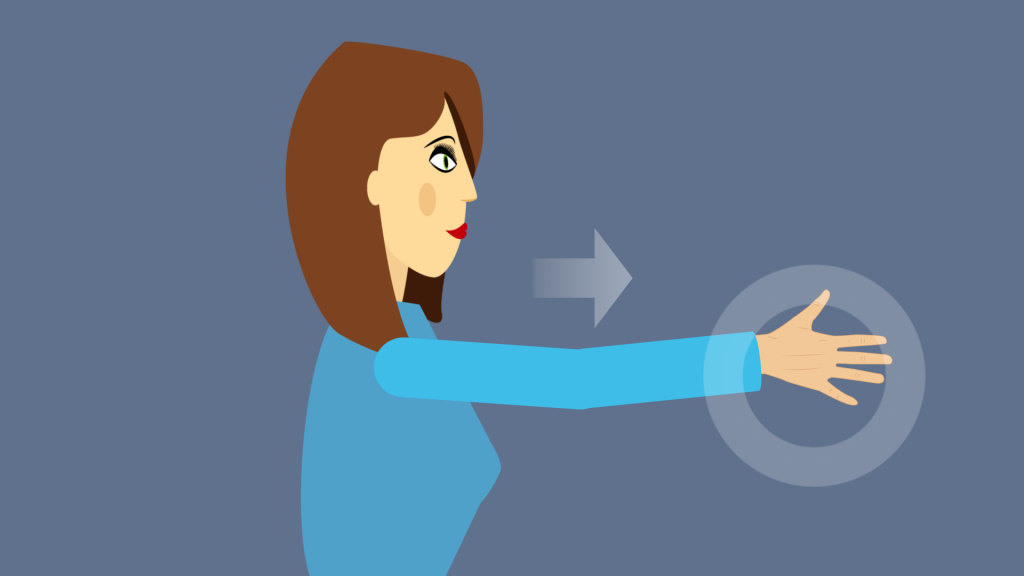
Let’s move on now to the second approach, which is called decoupling. Decoupling has also proven to be effective, especially for nail biting and hair pulling. This technique is helpful in cases where the hands, teeth or fingers are beyond your control and seemingly perform the behavior on their own, as if by magic.
Decoupling consists of two steps during which the unwanted behavior is slowly replaced and unlearned. The old problem behavior is essentially overwritten and eventually unlearned.
The decoupling approach works by mimicking and redirecting the old movements. The old behavioral pathway is changed so that it leads to a dead end. Consider the following example, before we go on in more detail later. When you experience an urge to bite your nails, move the fingers toward your face—just as you would do when you actually bite your nails—but do not allow them to reach your mouth but deflect them toward the ear just before contact (see Figure 3, Alternative 1). The fingernails still make contact, but not with your teeth. In this case, contact is made with the earlobe instead. Thus, the stimulus or behavioral urge involving the fingertips or fingers is satisfied but in a way that doesn’t result in injury. The new target movement should be performed with some tension and acceleration to ensure that the old behavioral routine, nail biting in this case, becomes conscious and can be diverted.
Let’s go
The important thing for decoupling to be effective is ensuring that the new replacement behavior is similar to the old behavior. This makes it easier to unlearn or redirect the old behavior.
Let’s look at a related example. If you’re doing math out loud, you’re more likely to be disturbed if another person is calling out numbers in the background at the same time. This is called interference. If words are being recited in the background instead, it’s much less disturbing.
Since skin picking, trichotillomania, and nail biting are long-term, engrained behavior patterns, you will need to practice the new “decoupled” behavior several times a day with awareness and when in situations that typically promote your behavior.
The new behavior sequence should be performed ten times in a row each time you do it. Practice this at least three times a day. Ideally, set your smartphone’s alarm (see last page for instructions), preferably for the times of day when you tend to actually perform the old behavior, as noted in your log. Also practice during the critical situations noted in the protocol (the chart we asked you to create earlier). We’ll now describe how to use the technique for two impulse-control disorders. The first example describes nail biting.

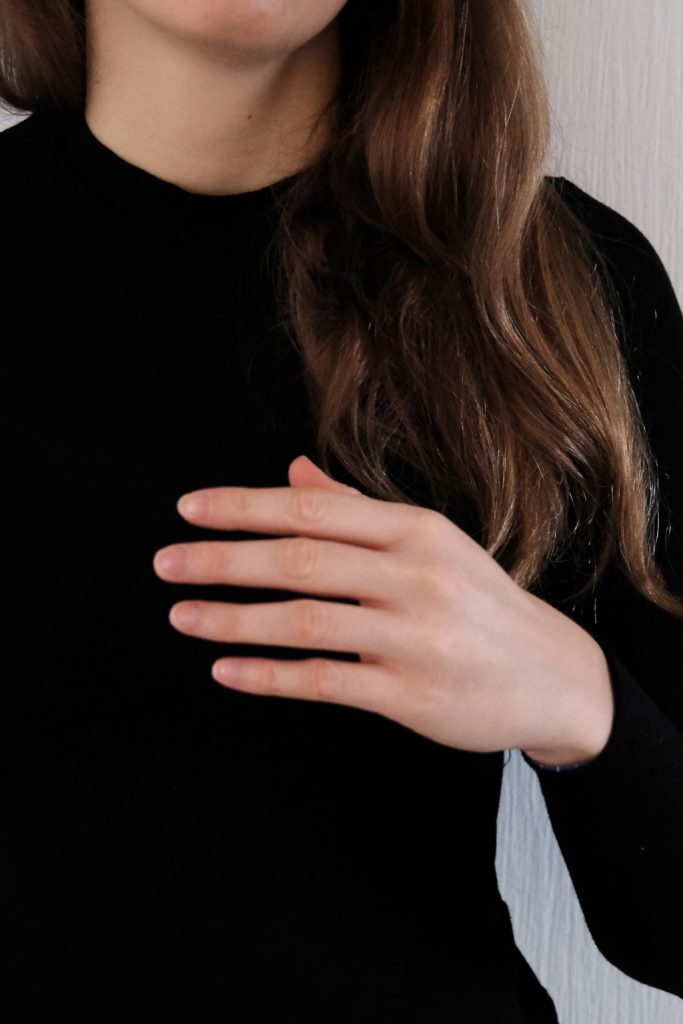
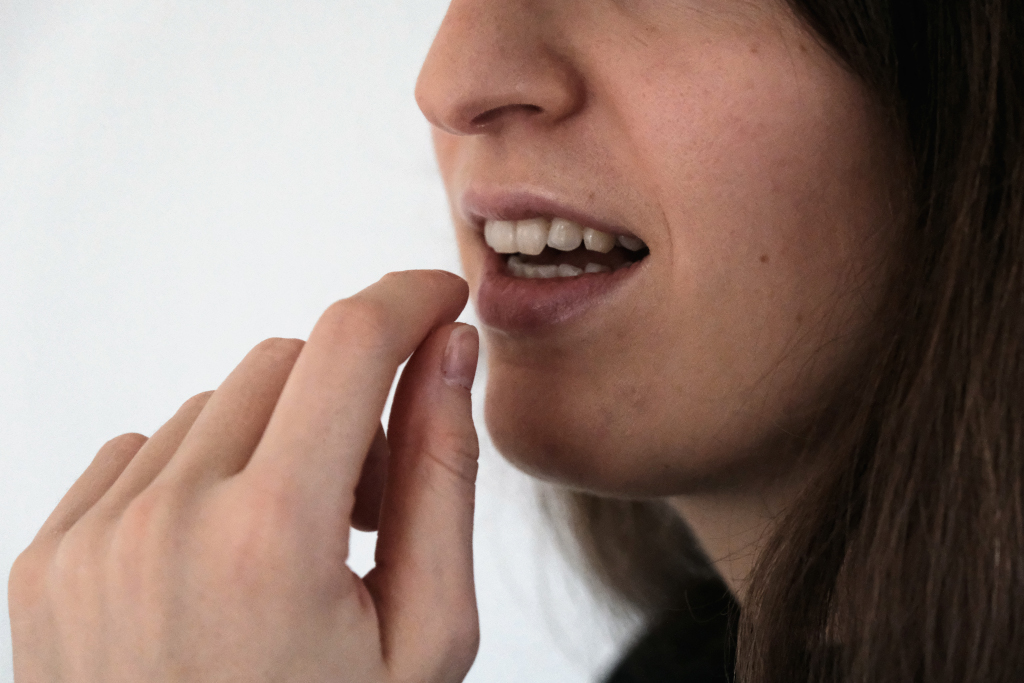
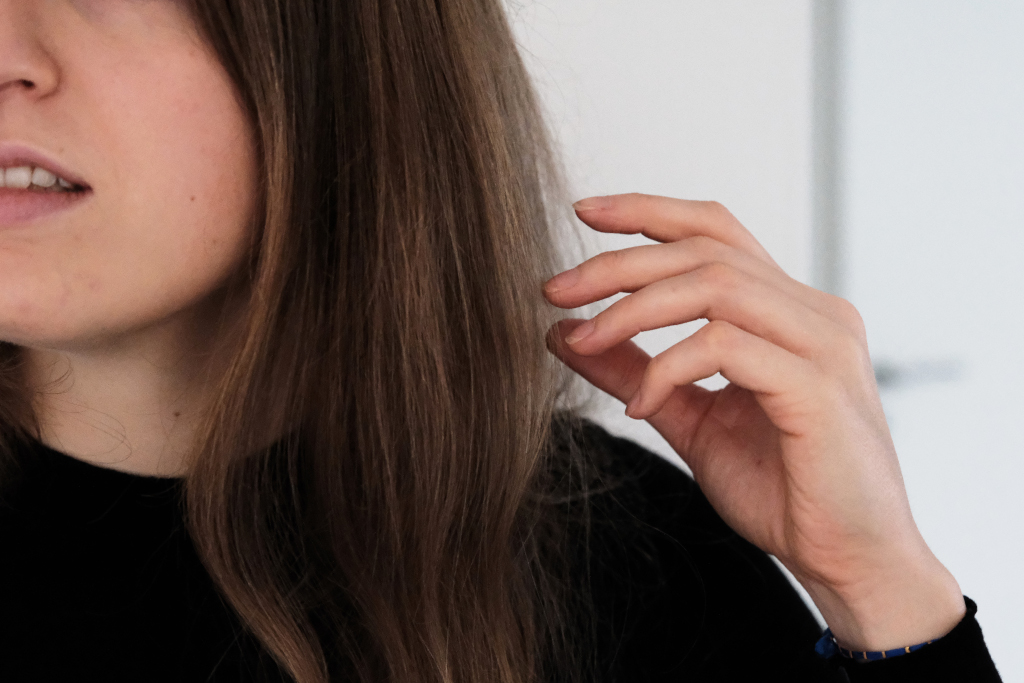
Figure 3: Illustrations of the decoupling technique. In the first phase (A, B, C and D), your hand mimics the old movement.
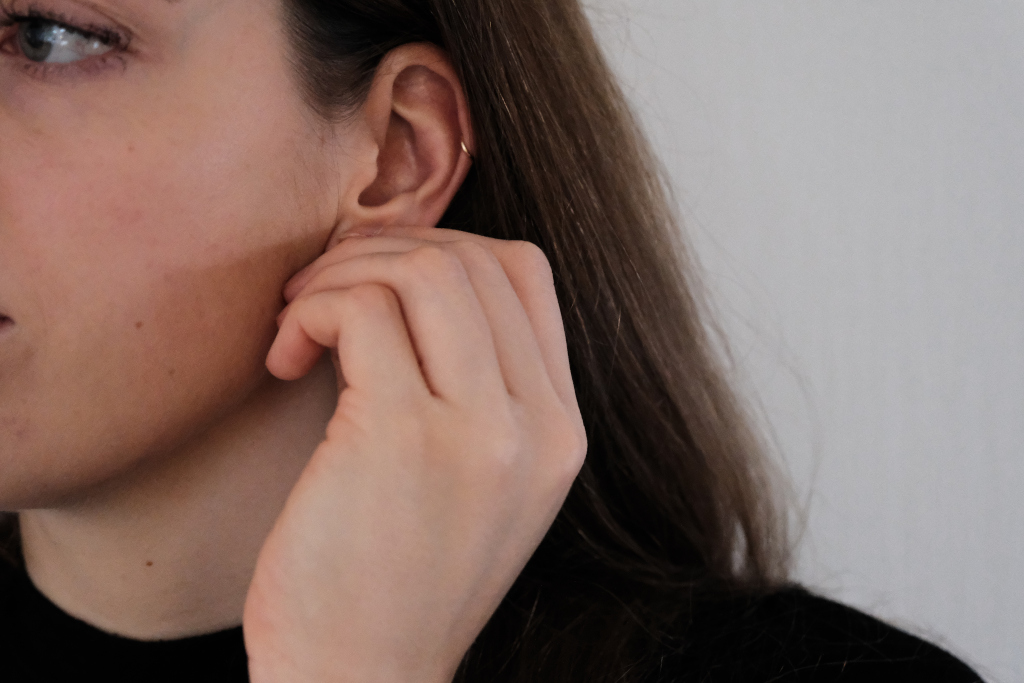
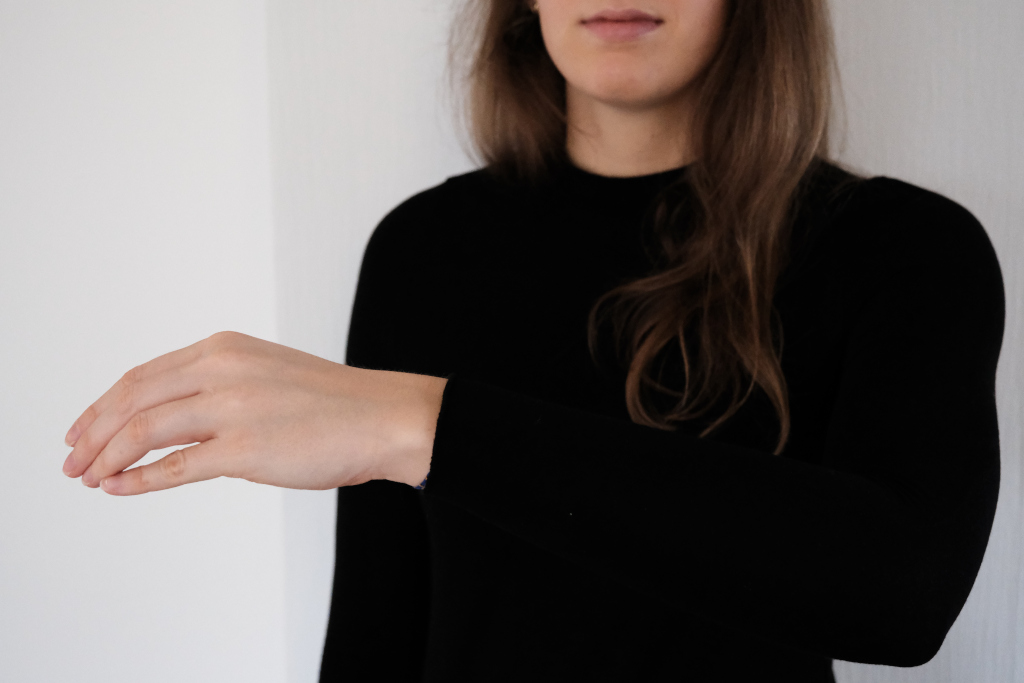
In Alternative 1, shortly before you reach the hair or teeth, redirect the movement to another body part (in this case, the ear). In Alternative 2, shortly before you reach the hair or teeth, quickly push your hand forward, away from your body.
Start by moving your fingers toward your mouth in a way that’s characteristic of your nail biting. This might look like circling the fingers toward your mouth before biting, but everyone does this a little differently. The movement should first be directed toward your mouth, as if you were about to bite your nails. Just before reaching your mouth, purposefully deflect your fingers to another specific body part or simply push them away from you (see Figure 3, alternatives 1 and 2). Remember, it’s important to perform the decoupling movement with a little tension and acceleration —even quickly flicking your hand away from yourself just before it reaches your mouth can be helpful. The accelerated movement will help you disrupt and eventually unlearn the old movement pattern. After completing the target movement (the new behavior), simply put your hands back in a neutral position. Initially, choose no more than two movement patterns as the old behavior is most likely to be unlearned or overwritten when strong and similar movement patterns replace it. Also, it’s best not to do the exercises in public as others may perceive them as disturbing or odd.
Rubbing your fingernails on the soft parts of the palm of your other hand or on the tip of your thumb on the same hand has also proven effective (see Figure 4). Your nails or fingertips should touch your palm or thumb at a 90-degree angle (perpendicular) (see Figure 4). Don’t push the skin under your nails or apply pressure. Use light movements, like a massage.

The nails are gently brushed against the thumb at a 90-degree angle without damaging them.
For trichotillomania, proceed in a similar way. First, guide your fingers toward your head in a way that’s characteristic of your hair pulling. Just before reaching the target, direct your fingers toward your neck, ear, nose, or some other specific point with an accelerated movement. You can deflect your hand to the back of your neck and massage it—without, of course, pulling out any hair. Flicking your hands forward can also be effective. As noted above, this accelerated movement helps you to disrupt and eventually unlearn the old movement pattern. Again, choose no more than two new movement patterns at first.